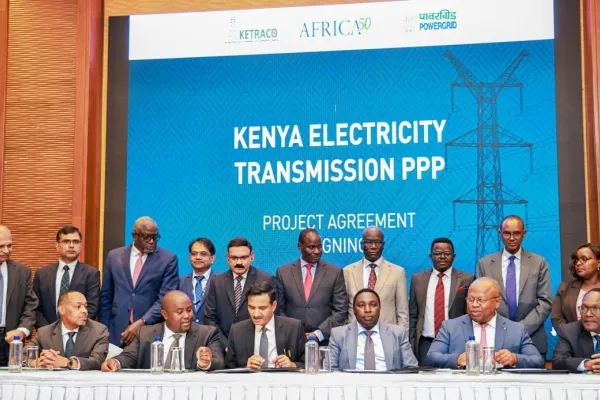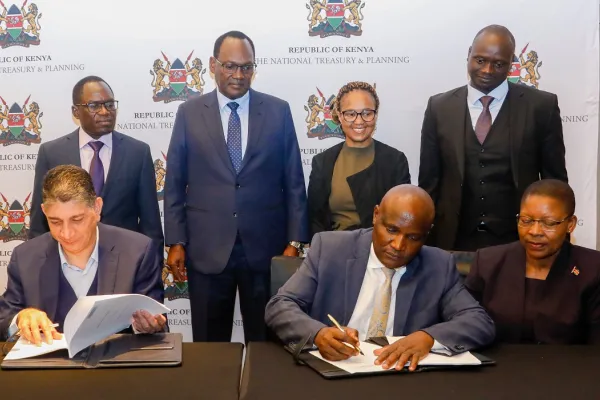Pandemic preparedness and health systems strengthening
Pandemic preparedness and health systems strengthening
The emergence of COVID- 19 has led to the revival of the efforts to reform international pandemic preparedness and response (PPR).
While discussions are ongoing across various platforms about the political processes and legal frameworks to be developed for future responses, there are lessons that nations can learn from decades of responding to outbreaks and some of the key principles that are critical to take forward for a more people-centered approach to PPR.
Like in all other continents, the pandemic caught Africa unawares, exposing glaring gaps and long-ignored risks within the continent’s health systems, from weak primary healthcare and over-reliance on medical imports to inadequate human resources for health and structural inequalities that manifested in the form of weak social protection programmes. This left low-income populations even more vulnerable to the impacts of COVID 19.
The COVID-19 pandemic has shown what’s at stake, upending the lives of families around the world. Millions of lives have been lost, while a generation of young people faced a learning crisis.
It’s been a stark reminder of the need to build resilient health systems globally to better handle future pandemics to protect lives and livelihoods.
And by resilient health systems, I mean we must have a health care system that can respond with utmost efficiency to shocks such as the COVID-19 pandemic, the emerging Monkeypox outbreak, and economic recessions among others.
A resilient health care system should be able to prepare for, adapt, and learn from such unexpected events.
For us to have resilient health systems, we must improve governance, increase financing in the health sector, have an adequate distribution of human resources and enhance service delivery for quality care.
It is encouraging to see widespread calls for more financing, reform of global governance for health-related crises, and fresh thinking around global public health.
Read also: Kenya to benefit from WHO, Gavi Sh18.5 billion malaria vaccine funding
When COVID -19 broke out, Amref’s community-centered approach to public health became critical in managing the pandemic across the continent.
However, vaccination remains the key element in a multi-layered approach to protecting oneself.
The global roll-out of COVID-19 vaccines to date is neither inclusive nor adequately planned: Many countries are already administering boosters while some others have been left behind.
Unfortunately, those left behind are mainly in Africa and other low-income economies. This is not the first time we are seeing such inequity.
We saw it with the uneven distribution of the lifesaving ARV’s for HIV patients until people had to protest on the streets for the drugs to become accessible.
It is disappointing to see the same inequity scenario replay despite the structures that had been put in place to ensure COVID-19 vaccine is accessible to all.
To date, Africa has received more than 817 million vaccine doses, 64 percent through the COVAX Facility, 29 percent from bilateral deals and 7 percent through Africa Vaccines Acquisition Trust (AVAT) of the African Union.
Despite COVID-19 vaccine supplies to Africa rising significantly, the continent is still struggling to expand rollout, with only 17 percent of the population fully vaccinated.
This is largely due to poor health service access as well as misinformation with anti-vaccine activists gaining popularity on their unfounded theories about the dangers of vaccination while risk perception drops from lower rates of infections and deaths.
What will it take to prepare for the next pandemic? While strategies might differ between countries and cities, it requires strong and resilient people-centered health systems, in particular primary care, to facilitate detection of disease outbreaks, and response, provide essential care and support the equitable deployment of essential diagnostics, therapeutics, and vaccines.
There is a need for well-functioning supply chains as well as adequate stockpiles of essential goods and equipment.
Critically, vaccine access remains uneven today, with countries in Africa lagging severely behind in the number of doses administered to their populations.
While there are multiple barriers contributing to this gap, it is evident that production capacity and supply-chain robustness remain important determinants of vaccine availability.
According to the World Health Organization, governments should consider integrating their sentinel surveillance systems to include other respiratory pathogens, such as SARS-CoV-2, respiratory syncytial virus, and other relevant pathogens, through the Global Influenza Surveillance and Response System.
Additionally, there will be a need for the implementation of the International Health Regulations to be accountable at the national, regional, and global levels.
With no clear end to the global health crisis in sight, it is time for multi-stakeholder action towards strengthening health systems and providing equitable access with a view to creating far-reaching, better, and more sustainable health impacts.
We also need to see more collaboration between the public and private sectors and the wider multilateral community to adequately handle such global crises.
COVID-19 is not the first health emergency we are facing, and it certainly won’t be the last. If the global pandemic has taught low- and middle-income countries anything, it is the need to strengthen public health capacity to rapidly identify and contain pandemic threats as well as respond to natural and man-made disasters.
The opinion writer, Dr Githinji Gitahi, is the Group CEO, Amref Health Africa, and Coalition for Epidemic Preparedness Innovations (CEPI) Board Member



